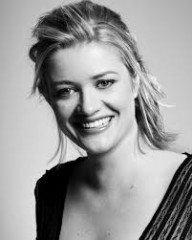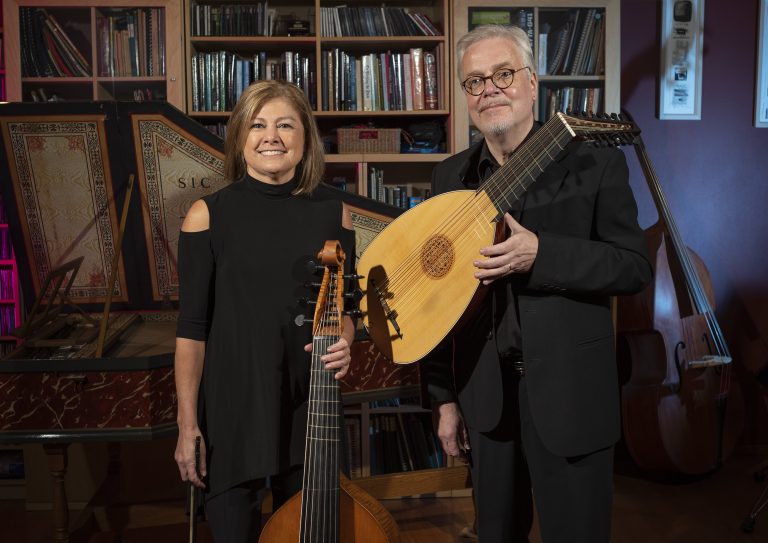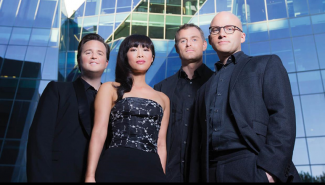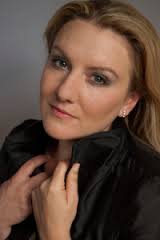Concert Review: Four Last Songs/ Omega Ensemble/ Lee Abrahmsen

Four Last Songs
Lee Abrahmsen, soprano with Omega Ensemble
City Recital Hall, April 20, 2016
An augmented Omega Ensemble was joined by soprano Lee Abrahmsen for Four Last Songs a programme of music which included original works, transcriptions and a world premiere by Andrew Ford.
The programme for Four Last Songs took its name from Richard Strauss’s eponymous work which was the final item and also one of Strauss’ final works, premiering in London, eight months after his death. (Kirsten Flagstad sang, with the Philharmonia Orchestra conducted by Wilhelm Furtwängler). Although Strauss never indicated that the songs be sung together, they have always been performed thus. Originally, the immortal Beim Schlafengehen was sung first, followed by September, Frühling (text to all three by Hermann Hesse) and Im Abendrot, (text by Joseph von Eichendorff) the longest song, at the end. It was Strauss’s friend Ernst Roth, to whom Im Abendrot was dedicated, who re-ordered them at the time of their publication by Boosey and Hawkes in 1950, and it is this chronological sequence which prevails today, starting with Frühling, September, Beim Schlafengehen and ending with Im Abendrot.
In this performance with Omega Ensemble, Lee Abrahmsen was accompanied by a 13 piece ensemble, led by violinist Ike See – much smaller forces than Strauss wrote for. The reduction for chamber ensemble by James Ledger omitted some of the original instruments like the trumpets and trombones and pared down some of the other lines to just one of each instrument.
It was an interesting perspective on this indelible quartet of songs. Indeed, the softer, more translucent texture enhanced the aching intimacy of the songs and their confrontation of profound emotions in reaction to the passage of life. The vocal lines were thrown into sharp relief and Lee Abrahmsen, immersed in the music, sang with a refreshing tone, creating a ravishing cascade of sound that radiated optimism and brightness in Frühling, fading to hooded darkness in Im Abendrot. There were fine solos too, from horn player Michael Dixon, violinist Ike See and the woodwind section.
Abrahmsen’s other contribution in the programme was the Vorspiel und Liebestod from Wagner’s Tristan und Isolde, another transcription by James Ledger for chamber ensemble (11 musicians), performed with a terrific sense of drama and tightly knit ensemble.
It was the first time that audiences heard Andrew Ford’s Contradance (2015) and the composer was on hand to explain his creative journey. Ford explained he has long been invigorated by folk music, and rather than quote from existing folk music, drew on “imaginary” folk music, dance and rhythms for this engaging 13 minute work for 11 piece chamber ensemble. Indeed, the beats of the opening bars and percussive instrumentation had a jazzy and primitive sense which gave way to a dreamier reverie as the strings spun out the sound in harmonics over the wind and brass at the end of the piece.
Mahler’s Piano Quartet in A minor, written whilst he was still just 16 and a very young student at the Vienna Conservatorium, was the first movement of a larger work that was never completed. Now a stand alone chamber piece it was a sign of things to come from Mahler’s genius. It was a tremendously sophisticated performance by pianist Maria Raspopova, violinist Ike See, violist Neil Thompson and cellist Teije Hylkema. The ensemble was taut and the performance was inspired with a rapturous range of colour and dynamic.
Do we lose anything by creating chamber versions of larger works? Inevitably the transcriptions are different. But there is also much to gain. A sympathetic arrangement will retain all the critical elements of the score yet shine new light on aspects of the music that we might have stopped actively listening to; we have the opportunity to hear in concert, music that is otherwise less often performed because of the larger forces and cost required; musicians have the opportunity to play a work that may not otherwise come their way.
Speaking before the concert, Omega Ensemble Ambassador Gerard Willems AM, described an ensemble that aimed to be ‘flexible and all-encompassing’. To accomplish this, Omega Ensemble regularly expands and diversifies its membership, drawing on a body of regular musicians to add to its core. The model on which Omega Ensemble is conceived is innovative and makes a great deal of sense. Although the invited musicians vary, the performance is cohesive and artistic. The end result is a testament to the musicianship and professionalism of the players.
In his comments, Andrew Ford remarked that despite working without a conductor, the ensemble had “nailed” his rhythmically complex Contradance. However, a vocal soloist adds a different factor to the equation and it was in the matter of dynamics that an independent set of “ears” on a podium at the front, separate from the ensemble would have ensured a more even acoustic balance at the times when the soprano soloist was somewhat dominated by the instruments.
Omega Ensemble has had an extraordinary trajectory since its inception by Artistic Director David Rowden just over 10 years ago. Now the Ensemble in Residence at the City Recital Hall, Omega Ensemble make wonderful musical ambassadors for Australia, appearing on Qantas’ in-flight entertainment on international routes.
Shamistha de Soysa for SoundsLikeSydney©







